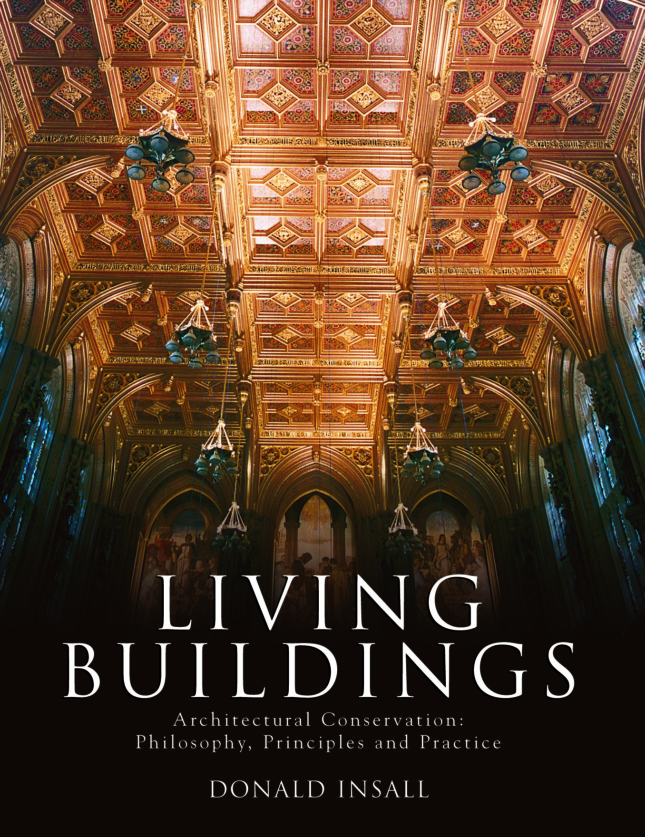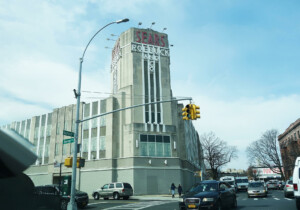Living Buildings: Architectural Conservation, Philosophy, Principles and Practice
Donald Insall
Images Publishing
$60.00 List Price
Conservation architecture has never been glamorous. It is simply a reflection of contemporary society that the careful continuation of what already exists is always going to be overshadowed by the creation of wholly something new. Yet from Berlin’s Neues Museum to London’s St Pancras Station, if we look across a range of globally significant architecture projects from recent decades we see that a conservation approach has been instrumental in many of them.
While there is a tendency to lump conservation architects in with their traditionalist cousins—and this book by leading conservation architect, Donald Insall, actually contains a foreword by HRH The Prince of Wales—it is wrong to see the conservation movement as necessarily conservative, or even reactionary. The Society for the Protection of Ancient Buildings (SPAB) was founded in 1877 by, among others, William Morris and Philip Webb—figures to whom certain aspects of modernism can also be traced—and the histories of modernism and traditionalism have run in parallel. Both, in a sense, were cultural responses to the conditions of industrial modernity.
Even in the 1960s, when conservation became the clear counter to modernism’s excesses, particularly in town planning, the relationship between the two remained more complex than one of straightforward opposition. One could even argue that the conservation movement actually played an enabling role; its very existence freed modernism of the past so that it could focus wholly on how architecture might bring about a better future.
Postmodernism, of course, fundamentally challenged these frameworks and distinctions. One of its most pervasive and important legacies has arguably been the gradual infiltration of a conservation approach into the mainstream. Every architect today when approaching a project considers questions of context, place, and history. For that reason this book should be of interest not just to those concerned with conservation, but to all architects and, indeed, everyone with an appreciation of architecture and its past, present, and futures.

For over 60 years, Insall has led one of Britain’s most respected practices of conservation architects, working on a range of highly significant conservation projects. Part manual, part theory of conservation, this book’s chief proposition is that buildings are not fixed or static entities but are “living” things—and that this idea should inform approaches to their care and upkeep.
Early in the book, Insall states that “every building is a product not only of its original generator…but of the continuing effects upon its materials of time and weather, and of generations of successive occupants, each with his own set of values and requirements.” The starting point for every project should therefore be to look for “each project’s unique identity and character.”
Such is the passion with which Insall proclaims that “buildings are alive;” one might infer that to his mind it’s more than mere metaphor. Yet as a metaphor it proves a useful way of organizing the various aspects of his approach, whether it’s assessing the role of “locality and materials” (“materials have their own story, and in old buildings speak eloquently of their local origin”), the role of “weather and the elements” as “a continuous force in shaping a living building” or the way “cyclical renewal is part of every building’s life and history.”
One of the striking things about this book is how it ranges from the micro to the macro. It is rare, for example, to read in the same book a reminder to close the door to a library if building work is going on outside and reflections on the philosophy of conservation. But it’s this broad scope that allows it to be both a primer and of interest to the expert. Aimed at both experts and general readers is Insall’s core argument that the approach to “old buildings” should be open and led not by preconceptions but the innate qualities of the buildings themselves. One only wishes that the same principal might be applied to the very notion of heritage and what is deemed “significant,” which so often claims objectivity but is in fact reflective of ideology. But that is not Insall’s subject.
There are moments of the book that jar, notably the relentless “he” and “his” in relation to the architect, and as a distillation of half-a-century’s work, there are inevitably some aspects that feel dated. But the underlying message remains fresh—and important not just for conservation, but for architecture as a whole. The challenge for architecture today is not necessarily about building more or even better, but adapting and making more equitable use of what already exists. Of course, this is far from simply being an architectural issue. But architects can show how it can be done, perhaps even with conservation architects leading the way.











